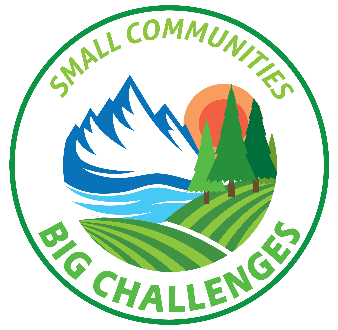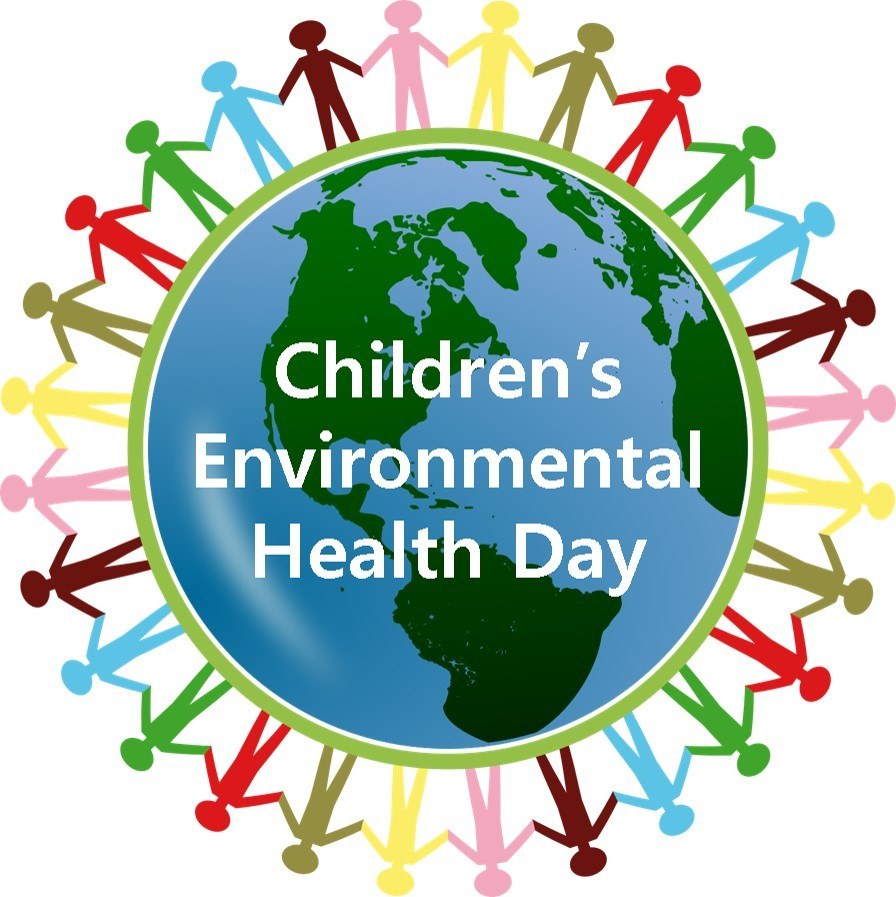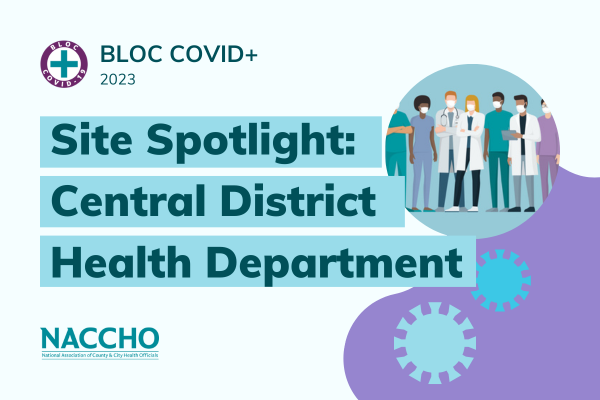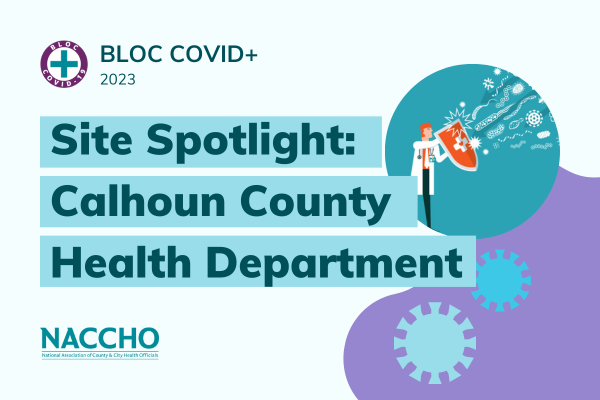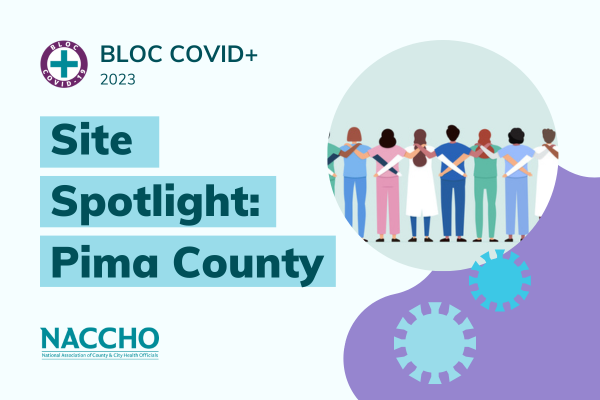Popular Categories
Aedes Aegypti and Local Vector Control: Mapping out a Plan for Zika Vector...
Summertime is approaching, which means mosquito season is upon us. As the weather gets warmer, we can expect to see an increase in the...
May 31, 2016 | Nyana Quashie
STD Contact Tracing Infographic
NCSD developed an infographic to help explain the work of Disease Intervention Specialists (DIS) and other public health professionals...
May 11, 2016 | Alyssa Kitlas
Taking a Regional Approach to Statewide Preparedness and Response
Emerging and evolving threats like Ebola and Zika continue to demonstrate how infectious disease transcends jurisdictional boundaries,...
May 09, 2016 | Sara Chang
Share Your Best Emergency Management and Response Practices at Water and Wastewater...
The Water Research Foundation (WRF), with the American Water Works Association (AWWA), is conducting a research project titled...
Apr 12, 2016 | Amy Chang
7 Million Americans at Risk of Man-Made Earthquakes, Says USGS
A new report by the United States Geological Survey (USGS) shows that approximately 7 million people live and work in areas of the...
Mar 30, 2016 | Katie Regan
Attend Environmental Health Sessions at the 2016 Preparedness Summit
The Preparedness Summit, held this year in Dallas April 19-22, is the first and longest running national conference on public health...
Mar 21, 2016 | Amy Chang
NACCHO and CDC Partner for Radiation Sheltering Toolkit
Radiation preparedness is no longer just a concern for jurisdictions neighboring nuclear facilities with the risk for a radiological...
Mar 10, 2016 | Kelsey Edge
EPA Online Mapping Tool to Help Protect Drinking Water Sources
The U.S. Environmental Protection Agency (EPA) released DWMAPS – the Drinking Water Mapping Application to Protect Source Waters. This...
Mar 01, 2016 | Amy Chang
Aedes Aegypti and Local Vector Control: Mapping out a Plan for Zika Vector Surveillance and ControlSummertime is approaching, which means mosquito season is upon us. As the weather gets warmer, we can expect to see an increase in the population of one of the main mosquito species transmitting the Zika virus throughout the U.S—Aedes aegypti. To help understand the range and areas most likely to be impacted by Zika, NACCHO created several maps depicting the recorded distribution […] May 31, 2016 | Nyana Quashie |
STD Contact Tracing InfographicNCSD developed an infographic to help explain the work of Disease Intervention Specialists (DIS) and other public health professionals who perform contact tracing for STDs. The infographic provides an easy-to-follow visual to explain this hard boots-on-the-ground work done by member Health Departments across the county. NCSD plans to use this infographic to show policymakers how contact tracing... May 11, 2016 | Alyssa Kitlas |
Taking a Regional Approach to Statewide Preparedness and ResponseEmerging and evolving threats like Ebola and Zika continue to demonstrate how infectious disease transcends jurisdictional boundaries, organizational silos, and job descriptions. In response to this reality, the Texas Department of State Health Services (DSHS) is joining a diverse group of stakeholders across the state to enhance preparedness for high-consequence infectious diseases. From McAllen... May 09, 2016 | Sara Chang |
Share Your Best Emergency Management and Response Practices at Water and Wastewater UtilitiesThe Water Research Foundation (WRF), with the American Water Works Association (AWWA), is conducting a research project titled “Innovative Preparedness and Response Practices to Support Water System Resilience” to identify best emergency management and response practices and procedures currently in use at drinking water and wastewater utilities. The ultimate goal of the project is to […] Apr 12, 2016 | Amy Chang |
7 Million Americans at Risk of Man-Made Earthquakes, Says USGSA new report by the United States Geological Survey (USGS) shows that approximately 7 million people live and work in areas of the central and eastern United States vulnerable to man-made earthquakes. The six states that face the highest risk include Oklahoma, Kansas, Texas, Colorado, New Mexico, and Arkansas. This is the first time the […] Mar 30, 2016 | Katie Regan |
Attend Environmental Health Sessions at the 2016 Preparedness SummitThe Preparedness Summit, held this year in Dallas April 19-22, is the first and longest running national conference on public health preparedness. This year, the Summit focuses on resiliency and recovery. There are several exciting sessions related to environmental health. Read more about the sessions below: Danger at the Dinner Table: Understanding and Addressing Existing […] Mar 21, 2016 | Amy Chang |
NACCHO and CDC Partner for Radiation Sheltering ToolkitRadiation preparedness is no longer just a concern for jurisdictions neighboring nuclear facilities with the risk for a radiological emergency from a radiation dispersal device (RDD) or an improvised nuclear device on the rise. Communities need to prepare for such an event, but also take into consideration that in the event of a large-scale radiation […] Mar 10, 2016 | Kelsey Edge |
EPA Online Mapping Tool to Help Protect Drinking Water SourcesThe U.S. Environmental Protection Agency (EPA) released DWMAPS – the Drinking Water Mapping Application to Protect Source Waters. This online mapping tool provides the public, water system operators, state programs, and federal agencies with critical information to help safeguard the sources of America’s drinking water. DWMAPS allows users to learn about their watershed and understand […] Mar 01, 2016 | Amy Chang |
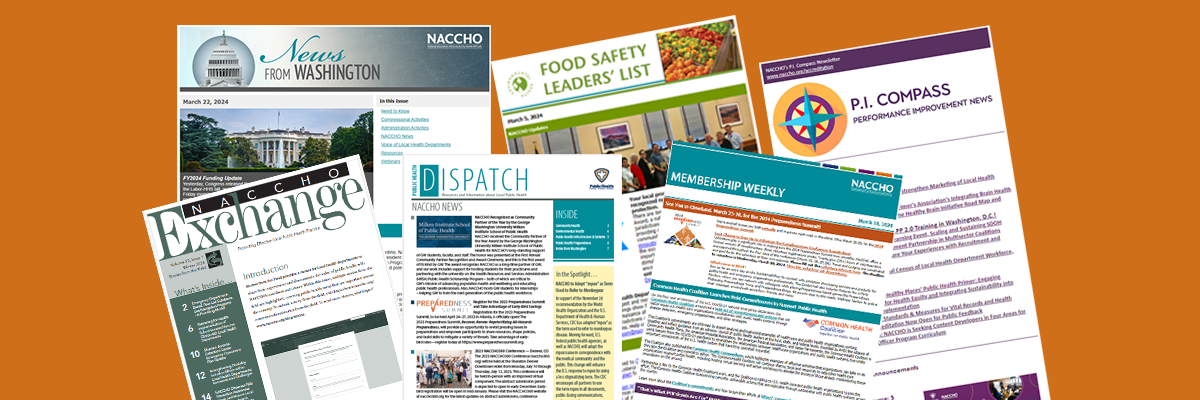
Subscribe Today
Sign Up for the E-mail Digests
Create an account or login to MyNACCHO and go to "My Subscriptions."
SUBSCRIBE NOW
